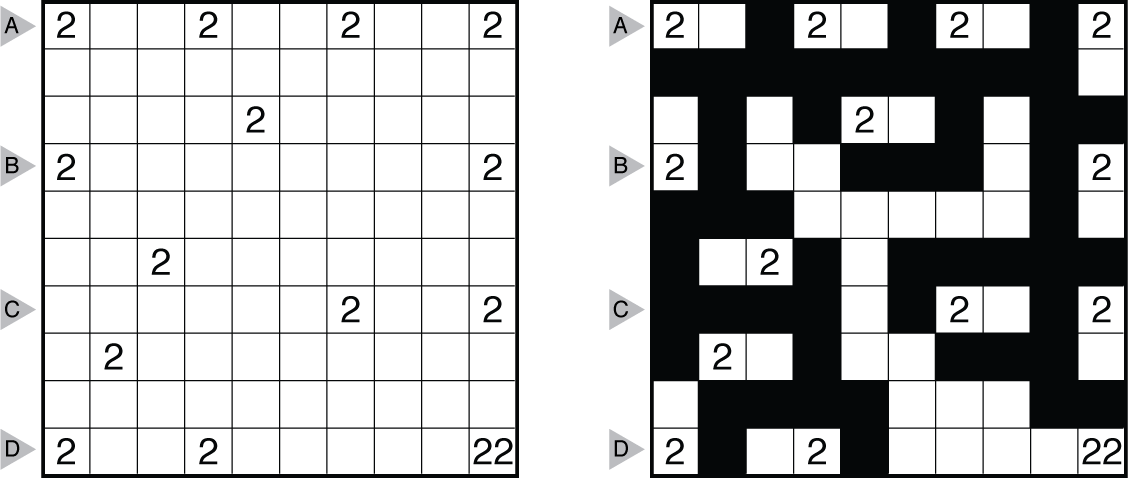Nurikabe Rules and Info

Rules: Shade some empty cells black so that the grid is divided into white areas, each containing exactly one number and with the same area in cells as that number. Two white areas may only touch diagonally. All black cells must be connected with each other, but no 2×2 group of cells can be entirely shaded black.
Answer String: Enter the length in cells of each of the black segments (the unnumbered, connected “ocean”) from left to right for the marked rows, starting at the top. Separate each row’s entry with a comma. This example has the key “111,131,411,11”.
(Brief) History of Nurikabe: Nurikabe was first published in 1991 by Nikoli in quarterly Communication 33; the original author was れーにん (Lenin). It was likely inspired by prior “area block” puzzles. The name Nurikabe derives from a spirit in Japanese folklore that forms a wall to misdirect travelers. In the west, the black cells are more often referred to as “water” or “ocean” and the white groups as “islands”. Alternative names like “Islands” or “Islands in the Stream” are sometimes used.
History of this example: This “all 2” Nurikabe was “Friday Puzzle #10” by Thomas Snyder.
Sources for Nurikabe Puzzles: Follow this link for classic Nurikabe puzzles on this website and this link for variations on Nurikabe puzzles. If you are new to this puzzle type, here are our easiest Nurikabe Puzzles to get started on. More Nurikabe puzzles can be in The Art of Puzzles, in our beginner-friendly book Logic Puzzles 101, and in the e-book Nurikabe by Ashish Kumar.
Design rules for contributors: A Grandmaster Nurikabe will have a unique solution that can be reached by logic alone. Generally, a Grandmaster Nurikabe should have an interesting visual theme or an interesting solution, but no requirements of symmetry exist. Sizes from 10×10 and above are recommended (maximum aspect ratio of 2:1 if rectangular).
